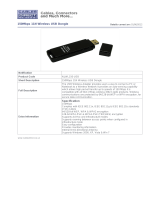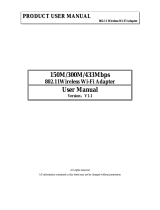
CONTENTS
Package Contents .................................................................................................... 1
Chapter 1 Product Overview ................................................................................. 2
1.1 Introduction ............................................................................................................. 2
1.2 Features.................................................................................................................. 2
1.3 Hardware Overview................................................................................................. 3
Chapter 2 Installation............................................................................................. 4
2.1 Hardware Installation .............................................................................................. 4
2.2 Software Installation................................................................................................ 4
Chapter 3 Connect to a Wireless Network ........................................................... 9
3.1 To connect using TWCU ......................................................................................... 9
3.2 To connect using WPS.......................................................................................... 13
3.2.1 PBC (Push Button Configuration) method................................................ 13
3.2.2 PIN method .............................................................................................. 16
3.3 To connect using Windows built-in wireless utility................................................. 19
3.3.1 In Windows XP......................................................................................... 19
3.3.2 In Windows Vista...................................................................................... 21
3.3.3 In Windows 7............................................................................................ 22
3.3.4 In Windows 8............................................................................................ 24
Chapter 4 Management........................................................................................ 27
4.1 Profile.................................................................................................................... 27
4.1.1 Add a profile ............................................................................................. 27
4.1.2 Modify a profile......................................................................................... 29
4.1.3 Delete a profile ......................................................................................... 30
4.2 Advanced .............................................................................................................. 30
4.3 About..................................................................................................................... 31
Chapter 5 AP Mode .............................................................................................. 32
Chapter 6 Uninstall Software............................................................................... 34
6.1 In Windows XP/Vista/7.......................................................................................... 34
6.1.1 Uninstall the utility software from your PC................................................ 34
6.1.2 Uninstall the driver software from your PC ............................................... 35
6.2 In Windows 8......................................................................................................... 36
6.2.1 Uninstall the utility software from your PC................................................ 36
6.2.2 Uninstall the driver software from your PC ............................................... 38
Appendix A: Specifications................................................................................... 40
Appendix B: Glossary............................................................................................ 41





















